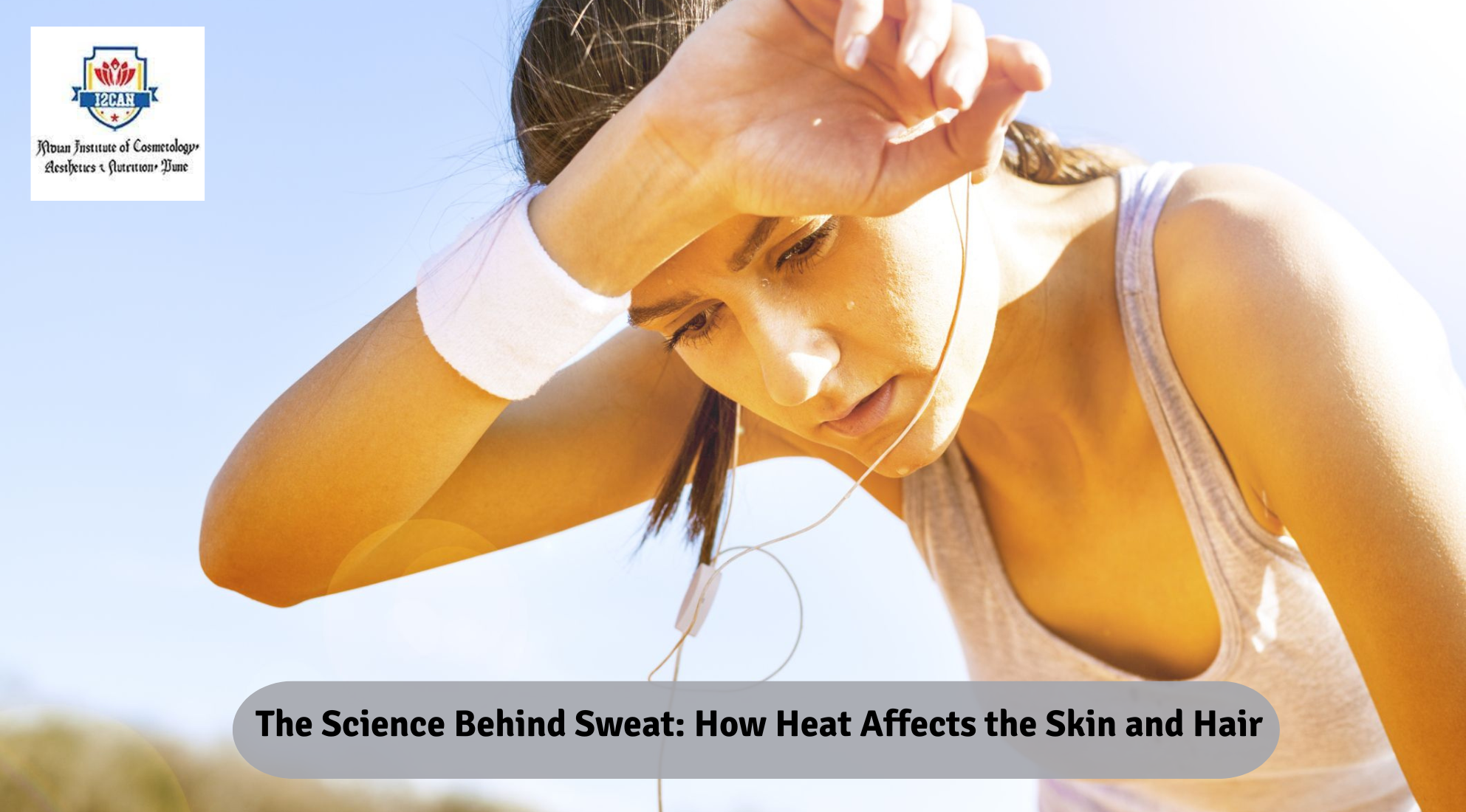Sweating is a natural bodily function that plays a crucial role in regulating body temperature, especially during periods of increased heat or physical exertion. While it may seem like a simple process, the science behind sweat and its effects on the skin and hair is quite fascinating. In this blog, we’ll delve into the intricate mechanisms of sweating, how heat impacts the skin and hair, and ways to maintain healthy skin and hair during hot weather.
Understanding Sweat:
Sweat, also known as perspiration, is primarily composed of water, along with small amounts of electrolytes such as sodium, chloride, and potassium. The process of sweating is controlled by the body’s thermoregulatory system, which helps maintain a stable internal temperature. When the body temperature rises, whether due to environmental heat or physical activity, the brain sends signals to the sweat glands to produce sweat.
There are two types of sweat glands in the body: eccrine glands and apocrine glands. Eccrine glands are found all over the body and are responsible for producing most of the sweat during physical activity or in response to heat. Apocrine glands, on the other hand, are located in areas with a higher concentration of hair follicles, such as the armpits and groin, and produce a thicker type of sweat that is odorless until it comes into contact with bacteria on the skin’s surface.
The Role of Heat on the Skin:
Heat has a significant impact on the skin, influencing its structure, function, and overall health. When exposed to high temperatures, several physiological changes occur within the skin:
- Vasodilation: Heat causes blood vessels near the skin’s surface to dilate, a process known as vasodilation. This allows more blood to flow to the skin, facilitating heat dissipation through radiation and convection.
- Increased Sweat Production: As mentioned earlier, heat triggers the sweat glands to produce sweat, which evaporates from the skin’s surface, cooling the body in the process.
- Hydration: Hot weather can lead to increased water loss through sweat, potentially leading to dehydration if fluid intake is not sufficient. Proper hydration is essential for maintaining skin elasticity and preventing dryness.
- Sun Damage: Exposure to high temperatures often accompanies exposure to ultraviolet (UV) radiation from the sun. Prolonged sun exposure can damage the skin’s DNA, leading to premature aging, sunburn, and an increased risk of skin cancer.
- Heat Rash: In some cases, prolonged exposure to heat and humidity can cause heat rash, also known as prickly heat. This condition occurs when sweat ducts become blocked, leading to inflammation and tiny red bumps on the skin’s surface.
Protecting the Skin in Hot Weather:
To protect the skin from the adverse effects of heat, it’s essential to take preventive measures and practice good skincare habits:
- Use Sunscreen: Apply a broad-spectrum sunscreen with a high SPF (sun protection factor) to protect the skin from harmful UV radiation. Reapply sunscreen every two hours, especially if sweating or swimming.
- Stay Hydrated: Drink plenty of water throughout the day to replenish fluids lost through sweat. Aim to consume at least eight glasses of water daily, more if engaging in strenuous physical activity.
- Wear Lightweight Clothing: Choose lightweight, breathable fabrics such as cotton or moisture-wicking materials to help keep the skin cool and dry. Avoid tight-fitting clothing that can trap sweat and heat against the skin.
- Seek Shade: Limit exposure to direct sunlight during peak hours (usually between 10 a.m. and 4 p.m.) when UV radiation is strongest. Seek shade whenever possible, especially if spending extended periods outdoors.
- Take Cool Showers: After being exposed to heat, take a cool shower to lower the body’s temperature and rinse away sweat and debris from the skin’s surface. Avoid using hot water, as it can further dehydrate the skin.
The Impact of Heat on Hair:
While sweat primarily affects the skin, it can also have secondary effects on the hair and scalp. Here’s how heat influences hair health:
- Scalp Sweat: Sweat glands are present not only on the skin but also on the scalp. Excessive sweating can lead to a buildup of sweat and oil on the scalp, potentially causing scalp odor and promoting the growth of odor-causing bacteria.
- Frizz and Dryness: High temperatures and humidity levels can cause the hair shaft to swell, leading to frizz and increased susceptibility to breakage. Additionally, excessive sweating can strip the hair of its natural oils, leaving it dry and brittle.
- Scalp Irritation: Sweat combined with dirt, oil, and styling products can clog hair follicles and lead to scalp irritation and dandruff. Keeping the scalp clean and well-hydrated can help prevent these issues.
- Hair Loss: While temporary hair loss due to heat or sweating is rare, chronic scalp inflammation or damage from excessive heat styling can contribute to hair thinning or hair loss over time.
Maintaining Healthy Hair in Hot Weather:
To keep your hair healthy and vibrant during hot weather, follow these hair care tips:
- Wash Regularly: Wash your hair regularly with a mild shampoo to remove sweat, oil, and product buildup from the scalp and hair. Be sure to rinse thoroughly to prevent residue from accumulating.
- Use Conditioner: Apply a hydrating conditioner to the lengths and ends of your hair to replenish moisture lost due to heat and sweat. Look for products containing ingredients like shea butter, coconut oil, or argan oil to nourish and protect the hair.
- Protect from Heat: Limit the use of heat styling tools such as blow dryers, flat irons, and curling irons, as excessive heat can further damage the hair. If you must use heat styling tools, apply a heat protectant spray or serum beforehand to minimize damage.
- Tie Up Hair: Keep your hair off your face and neck by tying it up in a loose bun or braid during hot weather. This not only helps prevent sweat and oil buildup but also reduces friction and breakage.
- Hydrate the Scalp: Use a lightweight, hydrating scalp serum or oil to moisturize and soothe the scalp, especially if it feels dry or irritated. Massage the product gently into the scalp to promote circulation and stimulate hair growth.
Conclusion:
Heat exerts a profound influence on the skin and hair, affecting their structure, function, and overall health. By understanding the science behind sweat and its effects on the body, as well as implementing preventive measures and proper skincare and hair care practices, you can maintain healthy skin and hair even in hot weather conditions. Stay hydrated, protect your skin from the sun, and nourish your hair to keep them looking and feeling their best all year round.


